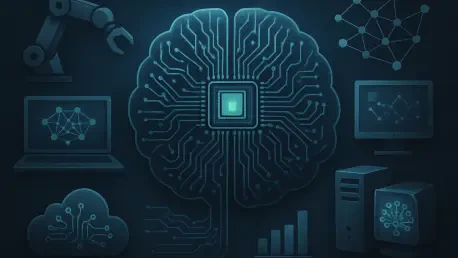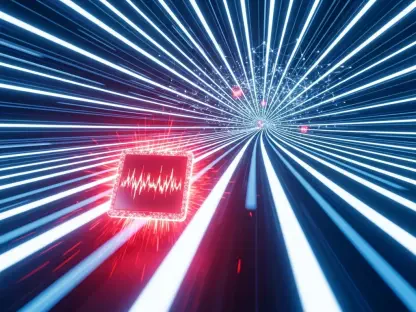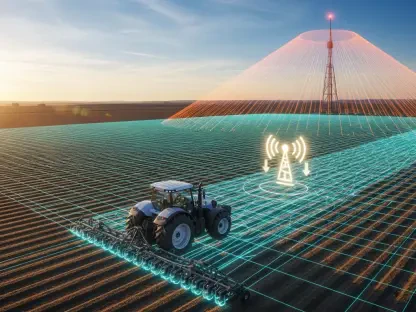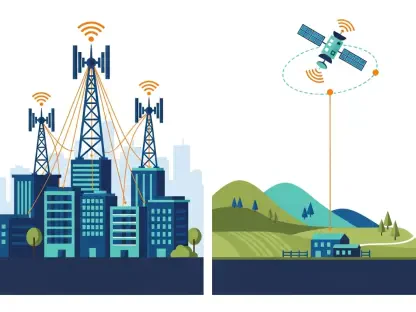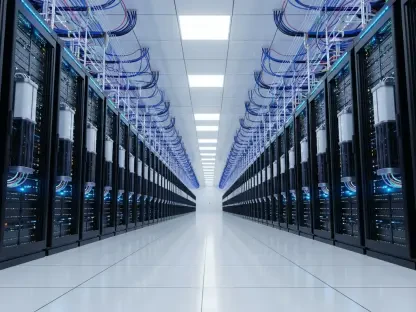In the rapidly evolving technological landscape, the fusion of the Internet of Things (IoT) and Artificial Intelligence (AI) is driving transformative changes across multiple sectors, including power distribution. As the global demand for electricity continues to rise, these technologies are being incorporated into the infrastructure to boost operational efficiency, grid reliability, and sustainability. The power distribution sector is particularly poised to benefit from this integration, leveraging data-driven insights and advanced algorithms to better manage resources. This progression, however, comes with its own set of cybersecurity challenges—a crucial aspect in this era of digitalization. Understanding how IoT and AI propel these developments is vital for recognizing their potential in transforming power distribution systems globally.
Integration of IoT in Power Distribution
Enabling Real-Time Monitoring and Control
The introduction of IoT into power distribution has ushered in a new era of connectivity and control, allowing utilities to monitor and manage grid operations in real-time. IoT devices, such as smart sensors, facilitate the collection of vital data on energy consumption patterns, equipment status, and grid performance. This data-centric approach not only enhances the visibility of operations but also enables utilities to preemptively identify and address potential issues related to equipment health, thereby reducing downtimes. The enhanced level of detail in monitoring fosters optimal resource utilization and effective grid management, leading to substantial improvements in service reliability and efficiency.
Recent estimates suggest a significant surge in the deployment of IoT devices within power networks. With projections indicating over 40 billion IoT devices operational today, their impact on the efficiency and reliability of power distribution systems is profound. Manufacturers have risen to meet this demand by providing a diverse array of IoT-enabled devices and offering certified technical expertise for managing these devices. This support, which spans both onsite and through digital platforms, ensures that power distributors can maximize the potential of the IoT framework in optimizing their operations.
Predictive Maintenance and IoT Evolution
One of the notable advancements brought about by IoT in power distribution is predictive maintenance. By continuously monitoring equipment condition data in real-time, IoT devices help identify signs of wear and potential failure before they manifest into actual breakdowns. This proactive approach, enabled by detailed analytics of collected data, allows utilities to implement timely interventions, thereby minimizing unexpected outages and extending the lifespan of equipment. Predictive maintenance not only reduces operating costs but also enhances the overall reliability of grid infrastructure.
The evolution of IoT technologies continues as they become integral components of smart grid frameworks. These advancements offer a robust channel for enabling large-scale energy management systems. Their growing prominence is further evidenced by ongoing efforts to integrate IoT with legacy systems, optimizing energy distribution, and demand response strategies. The long-term benefits extend into efficient energy utilization, thus contributing to a sustainable energy future. This fundamentally shifts power grids toward smarter, adaptable models capable of addressing the challenges posed by dynamic energy landscapes.
AI: Beyond Data Processing
AI and Machine Learning in Grid Management
Artificial Intelligence, with its ability to process vast amounts of data efficiently, complements the function of IoT in power distribution. Sophisticated machine learning algorithms applied to grid management allow utilities to uncover patterns, predict equipment failures, and formulate optimized distribution strategies. The use of AI-driven analytics transforms decision-making processes by providing deep insights into grid dynamics, enhancing both the stability and reliability of power systems. This intelligent layer offers predictive models that guide utilities in balancing supply-demand challenges and strategically allocating resources.
AI’s role is progressively expanding as it revolutionizes traditional energy distribution paradigms. By harnessing data from connected devices, AI opens up possibilities for enhanced demand response strategies and dynamic energy pricing models. These applications enable the power sector to respond with agility to fluctuating energy demands and diverse energy sources, including renewable energy integration. The precision offered by AI capabilities not only reduces operational costs but also promotes grid resiliency—essential components for transitioning to a sustainable energy grid structure.
Enhancing Resilience Through AI
AI’s transformative influence on power distribution is significantly evident in its capacity to enhance grid resilience. Utilities leveraging AI can predict and mitigate potential disruptions, ensuring continuous and reliable energy supply even during peak demand periods. Advanced analytics models help anticipate abnormalities and facilitate targeted interventions, reducing the impact of unforeseen events. This adaptability is crucial in safeguarding infrastructure against both natural and man-made threats, reinforcing the need for robust safeguards in ever-evolving energy landscapes.
The marriage of AI with power distribution not only aids in improving grid resilience but also advances efforts towards operational excellence. The reliance on traditional, reactive approaches is transitioning toward systematic and predictive methods, enabling utilities to maintain high performance standards despite volatility in energy demands or unexpected system challenges. This shift underscores the necessity for continual AI innovation alongside comprehensive grid modernization to sustain the momentum of progress, a prospect made even more compelling by the extensive benefits that AI technologies promise for the sector.
Digitalization and Cybersecurity
Digital Twins and System Optimization
Digitalization forms a crucial backbone in the transformative journey of power distribution, creating seamless connectivity between IoT platforms and AI systems. The concept of digital twins—virtual replicas of physical assets—adds an additional layer of depth to system optimization efforts. Through real-time simulation, digital twins allow utilities to fine-tune grid operations, leading to transparency and enhanced efficiency. This integrative approach offers utilities a scalable, customizable solution tailored to specific power network requirements. Enhanced decision-making capacity and predictive analytics fuel the transition toward more intelligent, responsive power systems.
Despite the potential advantages of digitalization, the widespread adoption of digital twins and similar technologies highlights the need for robust cybersecurity measures. As power distribution infrastructures become increasingly digitalized, they are exposed to higher risks such as cyberattacks and data breaches. Addressing these vulnerabilities necessitates sophisticated threat detection systems, secure communication protocols, and comprehensive identity management structures. These measures ensure data integrity and reduce potential exposure to cyber threats, which remains a top priority amid the shift toward digital-driven solutions.
Addressing Cybersecurity Challenges
The digital transformation of power distribution systems brings cybersecurity to the forefront as these infrastructures become more susceptible to attacks. Utilities are mandated to adopt advanced cybersecurity measures that protect their operations and ensure uninterrupted energy supply. Strategies such as AI-based threat detection, encryption protocols, and incident response plans become critical components for safeguarding the grid against evolving cyber threats. Organizations must rigorously evaluate vendor policies regarding data protection and cybersecurity capabilities to forge resilient systems that can withstand potential breaches.
Furthermore, a comprehensive approach to cybersecurity involves continuous adaptation and collaboration amongst industry stakeholders. As technology progresses, so do the tactics employed by cyber adversaries. Developing strategies to counteract such threats requires a commitment to innovation, ongoing monitoring, and adherence to cybersecurity best practices. In the broader context, investing in cybersecurity serves as an enabler for power distributors to confidently implement new digital technologies, resulting in stronger, more resilient infrastructures capable of meeting future energy demands.
Overcoming Implementation Challenges
Handling Infrastructure and Data Management
While the introduction of IoT and AI into power distribution offers numerous advantages, it also presents hurdles in implementation. Existing electrical infrastructure often struggles to accommodate modern IoT sensors due to limitations in space, capacity, or connectivity. Network congestion may arise from insufficient bandwidth or available ports, posing challenges to network expansion efforts. Additionally, the influx of data generated by IoT devices demands intelligent management systems capable of processing and analyzing large volumes effectively.
The challenge extends to integrating renewable energy sources with traditional grids, further complicated by demand response mechanisms. Efficiently managing these diverse energy inputs necessitates robust grid management techniques and intelligent resource allocation—the key to maintaining system stability. Addressing these complexity layers involves strategic infrastructure upgrades, deploying flexible grid architectures, and investing in robust data management frameworks. A collaborative approach involving stakeholders can also bridge the gap between traditional and modern energy systems.
Strategic Partnerships and Skill Development
Strategic partnerships with equipment manufacturers and service providers are instrumental in overcoming implementation challenges associated with modern technologies in power distribution. These collaborations allow utilities to leverage technical knowledge and expertise to facilitate the seamless adoption of IoT, AI, and digitalization in grid operations. Engaging with experts, power system engineers, and industry leaders ensures access to timely support, enables effective deployment of solutions, and fosters innovation within the sector.
Moreover, addressing the skills gap within the workforce remains essential for successfully managing these advanced technologies. Upskilling personnel with the competencies required to navigate the complexities of smart infrastructure is imperative. Training programs that focus on developing expertise in data analytics, AI, IoT, and cybersecurity can empower professionals to effectively manage digitalized systems. A well-equipped workforce is vital for operational excellence, offering proactive maintenance capabilities and ensuring seamless integration of next-generation technologies that propel the industry forward.
Future Considerations for the Power Distribution Industry
The integration of the Internet of Things (IoT) into power distribution marks a revolutionary shift toward enhanced connectivity and control, enabling utilities to oversee and manage grid operations in real-time. By utilizing IoT devices like smart sensors, utilities can gather essential data on energy usage patterns, equipment conditions, and overall grid performance. This data-centric approach significantly boosts operational visibility, allowing utilities to proactively pinpoint and tackle potential equipment health issues, minimizing downtimes. Such detailed monitoring enhances resource optimization and effective grid management, improving service reliability and efficiency.
Recent projections highlight a dramatic increase in IoT device deployment across power networks, with estimates suggesting over 40 billion devices in action today. These devices profoundly influence the efficiency and reliability of power distribution systems. Manufacturers have responded by offering a wide variety of IoT-enabled devices and certified expertise to manage them, both onsite and online. This support ensures power distributors can fully harness IoT’s capabilities to optimize their systems.
